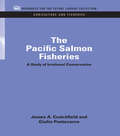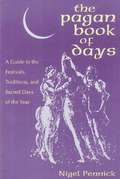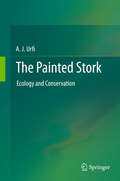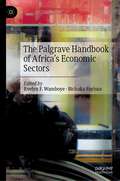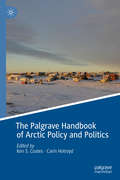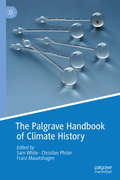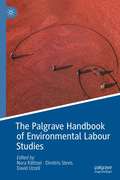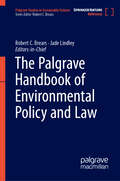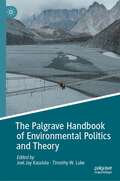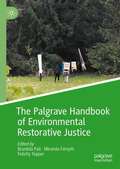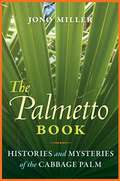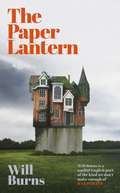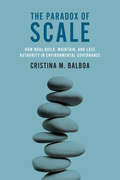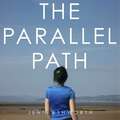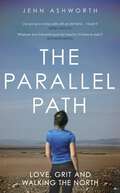- Table View
- List View
The Pacific Northwest Native Plant Primer: 225 Plants for an Earth-Friendly Garden
by Kristin Currin Andrew MerrittNative plants bring your garden to life—and life to your garden! Here are the best choices for Oregon and Washington. The benefits of native plants are enormous—they reduce maintenance, require less water, and attract vital, earth-friendly pollinators like birds, butterflies, and bees. Gardeners seeking to add them to their landscape will find no better guide than The Pacific Northwest Native Plant Primer. Packed with proven advice that everyhome gardener can follow, this incomparable sourcebook profiles 225 recommended native wildflowers, grasses and grasslike plants, ferns, shrubs, and trees. With additional introductory information on preparation, planting, maintenance, and climate considerations, it&’s everything you need to know to create a beautiful and beneficial garden. This must-have handbook is for gardeners in Oregon, Washington, and southern British Columbia.
The Pacific Salmon Fisheries: A Study of Irrational Conservation (RFL Agriculture and Fisheries #3)
by James A. Crutchfield Giulio PontecorvoThis study attributes the chronic economic distress of the valuable Pacific salmon industry not only to decline in catch but also to the economic problems of open access ocean fisheries. It analyzes salmon public management programs and proposes alternatives. Originally published in 1969
The Pagan Book of Days: A Guide to the Festivals, Traditions and Sacred Days of the Year
by Nigel PennickThe Pagan Tradition is grounded in mystical and numinous elements existing between matter and spirit. The world over it is called something like "the old religion," or "the elder faith," acknowledging its senior status among religions. It places emphasis on the links between people, their land, and the natural cycles of the seasons.
The Painted Stork
by A. J. UrfiThe book will cover the entire range of the Painted Stork--beyond its stronghold in India and Sri Lanka to other countries--E Asia as well. For the sake of comparison, relevant information will be included about the other species of storks--both solitary as well as colonial, of Asia, as well as those in other parts of the world. Certainly plenty of references will be made about the work done on the American Wood Stork. Studies are underway in order to better understand the role of the monsoon rains on the nesting pattern of Painted Stork, besides attempting a review of the global status of the species. The former is likely to be of interest in augmenting our understanding about how global climate change is going to affect birds across India and the second is likely to raise interesting points about the distribution of species and their ranges. Both these studies will be carried through 2009 and should hopefully be included in the proposed book. Naturally, the focused interest in field research on the Painted Stork has resulted in accumulation of considerable information on this particular species, which is beyond the information contained on some standard Indian and international works and ornithological texts. The author hopes to include the entire spread of information of this species--from its systematics, evolution, distribution, ecology to its role in human culture as well as its association with mythologies. In other words, topics have not been restricted to the areas of the author's research but have spilled over into areas of anthropology, ecology, conservation, etc.
The Palgrave Handbook of Africa’s Economic Sectors
by Evelyn F. Wamboye Bichaka FayissaThis handbook provides a reference resource to showcase insightful and nuanced perspectives on Africa’s agriculture, industry, services, and manufacturing sectors; factors affecting the sectors’ competitiveness; and the sectors’ contribution to employment, economic growth, and sustainable development. It also addresses the potential benefits that the sectors could harness from the planned Continental Free Trade Area (CFTA), and in particular how CFTA could increase the efficiency and competitiveness of these sectors.This book provides evidence-based holistic analyses of the past and current state of Africa’s economic sectors, with a strong emphasis on tangible and specific policy recommendations for the purpose of enhancing future economic growth, employment, and sustainable development of the continent. It also assesses the impact of the first-ever Continental Free Trade Area in Africa, and its potential implications for Africa’s integration into regional and global economy and competitiveness relative to other fast developing economies (such as those in Asia). This handbook gives an in-depth analysis of fundamental domestic factors that have relevance on the sectors’ expansion and growth and their contributions to employment, economic growth, and sustainable development in Africa with differential effects across the continent.
The Palgrave Handbook of Arctic Policy and Politics
by Ken S. Coates Carin HolroydThe Arctic has, for some forty years, been among the most innovative policy environments in the world. The region has developed impressive systems for intra-regional cooperation, responded to the challenges of the rapid environmental change, empowered and engaged with Indigenous peoples, and dealt with the multiple challenges of natural resource development. The Palgrave Handbook on Arctic Policy and Politics has drawn on scholars from many countries and academic disciplines to focus on the central theme of Arctic policy innovation. The portrait that emerges from these chapters is of a complex, fluid policy environment, shaped by internal, national and global dynamics and by a wide range of political, legal, economic, and social transitions. The Arctic is a complex place from a political perspective and is on the verge of becoming even more so. Effective, proactive and forward-looking policy innovation will be required if the Far North is to be able to address its challenges and capitalize on its opportunities.
The Palgrave Handbook of Climate History
by Sam White Christian Pfister Franz MauelshagenThis handbook offers the first comprehensive, state-of-the-field guide to past weather and climate and their role in human societies. Bringing together dozens of international specialists from the sciences and humanities, this volume describes the methods, sources, and major findings of historical climate reconstruction and impact research. Its chapters take the reader through each key source of past climate and weather information and each technique of analysis; through each historical period and region of the world; through the major topics of climate and history and core case studies; and finally through the history of climate ideas and science. Using clear, non-technical language, The Palgrave Handbook of Climate History serves as a textbook for students, a reference guide for specialists and an introduction to climate history for scholars and interested readers.
The Palgrave Handbook of Climate Resilient Societies
by Robert C. BrearsThe effects of climate change are beginning to be felt around the world with rising temperatures, changing precipitation levels, more frequent and severe storms and longer more intensive droughts threatening human life and livelihoods and damaging property and infrastructure. As such, society in all countries – both developing and developed – need to increase their resilience to the impacts of climate change, where resilience is the ability of a system to absorb stresses and adapt in ways that improve the overall sustainability of the system; enabling it to be better prepared for future climate change impacts.In this context, a climate resilient society is one that is: reflective (learns from experiences); robust (both people and infrastructure can withstand the impacts of extreme conditions); forward-thinking (with plans made to ensure systems function during extreme events); flexible (so systems and plans can change, evolve or adopt alternative strategies); resourceful (to respond quickly to extreme events); inclusive (so all communities including the vulnerable are involved in planning); and integrated (so people, systems, decision-making and investments are mutually supportive of common goals).The Climate Resilient Societies Major Reference Work includes chapters covering a range of themes that provide readers with an invaluable overview on how various levels of government have attempted to create climate resilient societies. In particular, each chapter, under its respective theme, will address how a government, or series of governments, at various levels in non-OECD and/or OECD countries, have implemented innovative climate resilient policies that seek synergies across strategies, choices and actions, in an attempt to build a climate resilient society. Each chapter will address one specific sub-theme out of the population of themes covered in the Major Reference Work: Water, Energy, Agriculture and Food, Built environment and Infrastructure, Transport, Human health, Society, Disaster, Business and Economy, and Financing Climate Resilience.
The Palgrave Handbook of Environmental Labour Studies
by Nora Räthzel Dimitris Stevis David UzzellIn this comprehensive Handbook, scholars from across the globe explore the relationships between workers and nature in the context of the environmental crises. They provide an invaluable overview of a fast-growing research field that bridges the social and natural sciences. Chapters provide detailed perspectives of environmental labour studies, environmental struggles of workers, indigenous peoples, farmers and commoners in the Global South and North. The relations within and between organisations that hinder or promote environmental strategies are analysed, including the relations between workers and environmental organisations, NGOs, feminist and community movements.
The Palgrave Handbook of Environmental Policy and Law (Palgrave Studies in Sustainable Futures)
by Robert C. Brears Jade LindleyThe Palgrave Handbook of Environmental Policy and Law provides readers with information on developments in the two fields of environmental policy and environmental law in both developed and developing countries. In particular, the Handbook analyses policies and statutes used at the local, regional, national, and international level in locations of differing climates, governance, and levels of development that aim to protect the environment and ensure ecologically sustainable development. Furthermore, the Handbook not only examines the substance of these policies and laws, but also enforcement challenges, alternative legal mechanisms for advancing environmental policies, the role of market-based instruments in addressing environmental problems, and constitutional restrictions on environmental regulation.
The Palgrave Handbook of Environmental Politics and Theory (Environmental Politics and Theory)
by Timothy W. Luke Joel Jay KassiolaThis Handbook aims to provide a unique and convenient one-volume reference work, exhibiting the latest interdisciplinary explorations in this urgently burgeoning field of intellectual and practical importance. Due to its immense range and diversity, environmental politics and theory necessarily encompasses: empirical, normative, policy, political, organizational, and activist discussions unfolding across many disciplines. It is a challenge for its practitioners, let alone newcomers, to keep informed about the ongoing developments in this fast-changing area of study and to comprehend all of their implications. Through the planned volume’s extensive scope of contributions emphasizing environmental policy issues, normative prescriptions, and implementation strategies, the next generation of thinkers and activists will have very useful profiles of the theories, concepts, organizations, and movements central to environmental politics and theory. It is the editors’ aspiration that this volume will become a go-to resource on the myriad perspectives relevant to studying and improving the environment for advanced researchers as well as an introduction to new students seeking to understand the basic foundations and recommended resolutions to many of our environmental challenges. Environmental politics is more than theory alone, so the Handbook also considers theory-action connections by highlighting the past and current: thinkers, activists, social organizations, and movements that have worked to guide contemporary societies toward a more environmentally sustainable and just global order. Chapter “Eco-Anxiety and the Responses of Ecological Citizenship and Mindfulness” is available open access under a Creative Commons Attribution 4.0 International License via link.springer.com.
The Palgrave Handbook of Environmental Restorative Justice
by Brunilda Pali Miranda Forsyth Felicity TepperThis handbook explores the dynamic new field of Environmental Restorative Justice. Authors from diverse disciplines discuss how principles and practices of restorative justice can be used to address the threats and harms facing the environment today. The book covers a wide variety of subjects, from theoretical discussions about how to incorporate the voice of future generations, nature, and more-than-human animals and plants in processes of justice and repair, through to detailed descriptions of actual practices of Environmental Restorative Justice. The case studies explored in the volume are situated in a wide range of countries and in the context of varied forms of environmental harm – from small local pollution incidents, to endemic ongoing issues such as wildlife poaching, to cataclysmic environmental catastrophes resulting in cascades of harm to entire ecosystems. Throughout, it reveals how the relational and caring character of a restorative ethos can be conducive to finding solutions to problems through sharing stories, listening, healing, and holding people and organisations accountable for prevention and repairing of harm. It speaks to scholars in Criminology, Sociology, Law, and Environmental Justice and to practitioners, policy-makers, think-tanks and activists interested in the environment.
The Palgrave Handbook of Local Governance in Contemporary China
by Sujian Guo Jianxing YuThis Handbook provides a comprehensive overview of local governance in China, and offers original analysis of key factors underpinning trends in this field drawing on the expertise of scholars both inside and outside China. It explores and analyzes the dynamic interaction and collaboration among multiple governmental and non-governmental actors and social sectors with an interest in the conduct of public affairs to address horizontal challenges faced by the local government, society, economy, and civil community and considers key issues such as governance in urban and rural areas, the impact of technology on governance and related issues of education, healthcare, environment and energy.As the result of a global and interdisciplinary collaboration of leading experts, this Handbook offers a cutting-edge insight into the characteristics, challenges and trends of local governance and emphasizes the promotion of good governance and democratic development in China.
The Palgrave Handbook of Managing Fossil Fuels and Energy Transitions
by Keith Baker Geoffrey WoodThis Handbook is the first volume to comprehensively analyse and problem-solve how to manage the decline of fossil fuels as the world tackles climate change and shifts towards a low-carbon energy transition. The overall findings are straight-forward and unsurprising: although fossil fuels have powered the industrialisation of many nations and improved the lives of hundreds of millions of people, another century dominated by fossil fuels would be disastrous. Fossil fuels and associated greenhouse gas emissions must be reduced to a level that avoids rising temperatures and rising risks in support of a just and sustainable energy transition. Divided into four sections and 25 contributions from global leading experts, the chapters span a wide range of energy technologies and sources including fossil fuels, carbon mitigation options, renewables, low carbon energy, energy storage, electric vehicles and energy sectors (electricity, heat and transport). They cover varied legal jurisdictions and multiple governance approaches encompassing multi- and inter-disciplinary technological, environmental, social, economic, political, legal and policy perspectives with timely case studies from Africa, Asia, Australia, Europe, North America, South America and the Pacific. Providing an insightful contribution to the literature and a much-needed synthesis of the field as a whole, this book will have great appeal to decision makers, practitioners, students and scholars in the field of energy transition studies seeking a comprehensive understanding of the opportunities and challenges in managing the decline of fossil fuels.
The Palgrave Handbook of Natural Gas and Global Energy Transitions
by Damilola S. Olawuyi Eduardo G. PereiraThe Palgrave Handbook of Natural Gas and Global Energy Transitions provides an in-depth and authoritative examination of the transformative implications of the ongoing global energy transitions for natural gas markets across the world.With case studies from Africa, Asia, Europe, North America, Latin America, South America, Australia, and the Middle East, the volume introduces readers to the latest legal, policy, technological, and fiscal innovations in natural gas markets in response to ongoing global energy transitions. It outlines the risk mitigation strategies and contractual techniques — focusing on resilience planning, low-carbon business models, green procurement, climate-smart infrastructure development, accountability, gender justice, and other sustainability safeguards — that are required to maximize the full value of natural gas as a catalyst for a just and equitable energy transition and for energy security across the world.Written in an accessible style, this book outlines the guiding principles for a responsible and low-carbon approach to the design, financing, and implementation of natural gas development and commercialization. It is an indispensable text and reference work for students, scholars, practitioners, and stakeholders in natural gas, energy, infrastructure, and environmental investments and projects.
The Palgrave Handbook of Zero Carbon Energy Systems and Energy Transitions (Palgrave Studies in Energy Transitions)
by Geoffrey Wood Vincent Onyango Komali Yenneti Mariana LiakopoulouThe Palgrave Handbook of Zero-Carbon Energy Systems and Energy Transitions provides a comprehensive and authoritative source of information, analysis and recommendations on the multi- and inter-disciplinary subject of zero carbon energy systems. The Handbook will advance thinking and research underlying the on-going energy transition by; covering a wide range of energy technologies and sources (e.g. fossil fuels, renewables, low carbon energy) including investigating the potential of new and alternative technologies and fuel sources and looking at the power, heating/cooling and transport sectors; Looking at varied legal jurisdictions and governance approaches including developing and developed countries and investigating potential new approaches to achieving a zero carbon energy system; Providing a broad range of theoretical and methodological approaches from a range of disciplines; Inclusion of a global range of case studies from Africa, Arctic, Asia, Australasia, Europe, the Middle East, the Americas (Central, North and South) and the Pacific, from the international, national, sub-national to city/community level.
The Palmetto Book: Histories and Mysteries of the Cabbage Palm
by Jono MillerThe natural and cultural history of an iconic plant The palmetto, also known as the cabbage palm or Sabal palmetto, is an iconic part of the southeastern American landscape and the state tree of Florida and South Carolina. In The Palmetto Book, Jono Miller offers surprising facts and dispels common myths about an important native plant that remains largely misunderstood.Miller answers basic questions such as: Are palms trees? Where did they grow historically? When should palmettos be pruned? What is swamp cabbage and how do you prepare it? Did Winslow Homer’s watercolors of palmettos inadvertently document rising sea level? How can these plants be both flammable and fireproof? Based on historical research, Miller argues that cabbage palms can live for more than two centuries. The palmettos that were used to build Fort Moultrie at the start of the Revolutionary War thwarted a British attack on Charleston—and ended up on South Carolina’s flag.Delving into biology, Miller describes the anatomy of palm fronds and their crisscrossed leaf bases, called bootjacks. He traces the underground “saxophone” structure of the young plant’s root system. He explores the importance of palmettos for many wildlife species, including Florida Scrub-Jays and honey bees. Miller also documents how palmettos can pose problems for native habitats, citrus groves, and home landscapes.From Low Country sweetgrass baskets to Seminole chickees and an Elvis Presley movie set, the story of the cabbage palm touches on numerous dimensions of the natural and cultural history of the Southeast. Exploring both the past and present of this distinctive species, The Palmetto Book is a fascinating and enlightening journey.
The Paper Florist: Create and display stunning paper flowers
by Suzi MclaughlinPaper flowers are not only beautiful, but also incredibly versatile. They can be used to create everything from simple home decorations and gorgeous gifts to unique centrepieces and decorative one-off bouquets, all made from the most basic and inexpensive materials. Suzi McLaughlin's step-by-step tutorials cover a beautiful array of flowers including bluebells, peonies, poppies, cherry blossom and more, and will teach everything you need to know. Make delicate lifelike flowers, or let your imagination run wild and use Suzi's techniques to create playful hybrids. Adorn your home with colour and style with just a few simple steps.The flowers are accompanied by templates for every shape used in the book, as well as instructions on how to display your creations to their full potential. Whether you want to make a gloriously blousy bouquet, a bejewelled cherry blossom branch or an impressive floral centrepiece, this book is sure to delight and inspire.
The Paper Lantern
by Will Burns'Will Burns is a soulful English poet of the kind we don't make enough of' MAX PORTER'Hugely affecting and timely' LUKE TURNER'A boldly struck chord, one that contains many of the dissonances, but also the harmonies, found in England today' CHRIS POWERIn THE PAPER LANTERN, a single speaker charts and interrogates the shifts in mood and understanding that have defined a surreal, transformative period in both his own history and that of the surrounding area. Set in a shuttered pub - The Paper Lantern - in a village in the very middle of the country adjacent to the Chequers estate, the narrator embarks on a series of walks in the Chiltern Hills, which become the landscape for evocations of a past scarred with trauma and a present lacking compass. From local raves in secret valleys and the history of landmarks such as Halton House, to the fallout of the lockdown period, climate change and capitalism, THE PAPER LANTERN creates a tangible, lived-in, complicated rendering of a place.
The Paradise Notebooks: 90 Miles across the Sierra Nevada
by Steven Nightingale Richard J. NevleIn The Paradise Notebooks, Richard J. Nevle and Steven Nightingale take us across the spectacular Sierra Nevada mountain range on a journey illuminated by incandescent poetry and fascinating fact.Over the course of twenty-one pairs of short essays, Nevle and Nightingale contemplate the natural phenomena found in the Sierra Nevada. From granite to aspen, to fire, to a rare, endemic species of butterfly, these essay pairs explore the natural history and mystical wonder of each element with a balanced and captivating touch. As they weave in vignettes from their ninety-mile backpacking trip across the range, Nevle and Nightingale powerfully reconceive the Sierra Nevada as both earthly matter and transcendental offering, letting us into a reality in which nature holds just as much spiritual importance as it does physical.In a time of rapid environmental degradation, The Paradise Notebooks offers a way forward—a whole-minded, learned, loving attention to place that rekindles our joyful relationship with the living world.
The Paradox of Scale: How NGOs Build, Maintain, and Lose Authority in Environmental Governance (The\mit Press Ser.)
by Cristina M. BalboaAn examination of why NGOs often experience difficulty creating lasting change, with case studies of transnational conservation organizations in Southeast Asia and the Pacific.Why do nongovernmental organizations face difficulty creating lasting change? How can they be more effective? In this book, Cristina Balboa examines NGO authority, capacity, and accountability to propose that a “paradox of scale” is a primary barrier to NGO effectiveness. This paradox—when what gives an NGO authority on one scale also weakens its authority on another scale—helps explain how NGOs can be seen as an authority on particular causes on a global scale, but then fail to effect change at the local level. Drawing on case studies of transnational conservation organizations in Southeast Asia and the Pacific, The Paradox of Scale explores how NGOs build, maintain, and lose authority over time.Balboa sets a new research agenda for the study of governance, offering practical concepts and analysis to help NGO practitioners. She introduces the concept of authority as a form of legitimated power, explaining why it is necessary for NGOs to build authority at multiple scales when they create, implement, or enforce rules. Examining the experiences of Conservation International in Papua New Guinea, International Marinelife Alliance in the Philippines, and the Community Conservation Network in Palau, Balboa explains how a paradox of scale can develop even for those NGOs that seem powerful and effective. Interdisciplinary in its approach, The Paradox of Scale offers guidance for interpreting the actions and pressures accompanying work with NGOs, showing why even the most authoritative NGOs often struggle to make a lasting impact.
The Paradox of Water: The Science and Policy of Safe Drinking Water
by Bhawani VenkataramanWater is a molecular marvel. Its seemingly simple formula—H2O—dictates the properties that make water both essential for life and easily contaminated. Herein lies the paradox of water: we cannot live without it, but it is easily rendered "unsafe." The Paradox of Water explores the intersection of the scientific, social, and policy implications around access to safe drinking water. Drinking water is the smallest fraction of water used by a nation. Yet, the quality of this fraction is what dictates whether a community is healthy, educated, and economically sustained. Bhawani Venkataraman argues that a deeper understanding of the chemical nature of water is crucial to appreciating the challenges around access to safe drinking water. Drawing on recent research and case studies from the US and abroad, this book offers students an understanding of: the processes and oversight needed to ensure the safety of drinking water the role of the precautionary principle in managing drinking water potential solutions for expanding sustainable and equitable access to safe drinking water
The Paradoxes of Aid Work: Passionate Professionals (Routledge Humanitarian Studies)
by Silke RothThis book explores what attracts people to aidwork and to what extent the promises of aidwork are fulfilled. 'Aidland' is a highly complex and heterogeneous context which includes many different occupations, forms of employment and organizations. Analysing the processes that lead to the involvement in development cooperation, emergency relief and human rights work and tracing the pathways into and through Aidland, the book addresses working and living conditions in Aidland, gender relations and inequality among aid personnel and what impact aidwork has on the life-courses of aidworkers. In order to capture the trajectories that lead to Aidland a biographical perspective is employed which reveals that boundary crossing between development cooperation, emergency relief and human rights is not unusual and that considering these fields as separate spheres might overlook important connections. Rich reflexive data is used to theorize about the often contradictory experiences of people working in aid whose careers are shaped by geo-politics, changing priorities of donors and a changing composition of the aid sector. Exploring the life worlds of people working in aid, this book contributes to the emerging sociology and anthropology of aidwork and will be of interest to professionals and researchers in humanitarian and development studies, sociology, anthropology, political science and international relations, international social work and social psychology.
The Parallel Path: Love, Grit and Walking the North
by Jenn AshworthWhatever Jenn Ashworth turns her hand to, I'm there to read it'BENJAMIN MYERS, author of The Offing'With honesty, humour and determination, Ashworth's journey takes the reader from coast to coast in search of freedom'JESSICA ANDREWS, author of Milk Teeth'A miracle of a book . . . One of our finest human nature writers'RICHARD BEARD, author of Sad Little Men'Stunning - and stunningly intelligent'JULIE MYERSON, author of NonfictionBurnt out and longing for an escape, Jenn Ashworth emerged from lockdown with a compulsive need to walk - and to walk away. Armed with little more than the knowledge imparted by a two-day orienteering course and a set of maps, she embarked on the most epic of English walks: Wainwright's Coast to Coast.Guided not just by Wainwright's writing but also by daily letters from her friend Clive - facing an epic journey of his own - Jenn's pilgrimage soon becomes a chance to re-engage with the act of caring for others and for oneself.But the walk's tricky terrain is not the only thing standing in Jenn's way. As days go by, her balance begins to fail her and the act of putting one foot in front the other becomes a new exercise in caution. When a vicious heatwave forces her to pause her expedition and gives her an opportunity to investigate the new limitations of her body, Jenn is confronted with a life-altering diagnosis - and a new path of self-discovery.
The Parallel Path: Love, Grit and Walking the North
by Jenn Ashworth'Reading The Parallel Path feels like going on a long walk with an old friend: Jenn Ashworth is exceptionally good company. I loved it' Mark Haddon, author of The Curious Incident of the Dog in the Night-Time'Touching, thoughtful and frank - Jenn Ashworth is a wonderful writer' David Nicholls, author of You Are Here'Whatever Jenn Ashworth turns her hand to, I'm there to read it' Benjamin Myers, author of The Offing'I've long loved Ashworth's uncanny fiction, and this memoir is filled with her characteristic understanding of the connections between the physical world and our interior lives. Wonderful for taking on a walk yourself.'Financial Times'Ashworth traces her solo journey walking the North of England's Coast to Coast route, while reflecting on everything from grief to motherhood.'The i'With honesty, humour and determination, Ashworth's journey takes the reader from coast to coast in search of freedom'Jessica Andrews, author of Milk Teeth'A miracle of a book . . . A life exquisitely examined over a long walk across the north of England, from one of our finest human nature writers'Richard Beard, author of Sad Little MenBurnt out and longing for an escape, Jenn Ashworth emerged from lockdown with a compulsive need to walk - and to walk away. Armed with little more than the knowledge imparted by a two-day orienteering course and a set of maps, she embarked on the most epic of English walks: Wainwright's Coast to Coast.Guided not just by Wainwright's writing but also by daily letters from her friend Clive - facing an epic journey of his own - Jenn's pilgrimage soon becomes more than just walking: a chance to reconnect and excavate, to re-engage with the act of caring for others and for oneself.But the walk's tricky terrain is not the only thing standing in Jenn's way. As days go by, her balance begins to fail her and the act of putting one foot in front the other becomes a new exercise in caution. When a vicious heatwave forces her to pause her expedition and gives her an opportunity to investigate the new limitations of her body, Jenn is confronted with a life-altering diagnosis - and a new path of self-discovery.'Stunning - and stunningly intelligent . . . I was very moved and with her every step of the way'Julie Myerson, author of Nonfiction'Full of intelligence and wisdom, searing self-awareness and humour... Jenn Ashworth is an incredibly talented writer'Lily Dunn, author of Sins of My Father'Beautifully realised and powerful'Catherine Taylor, author of The Stirrings

